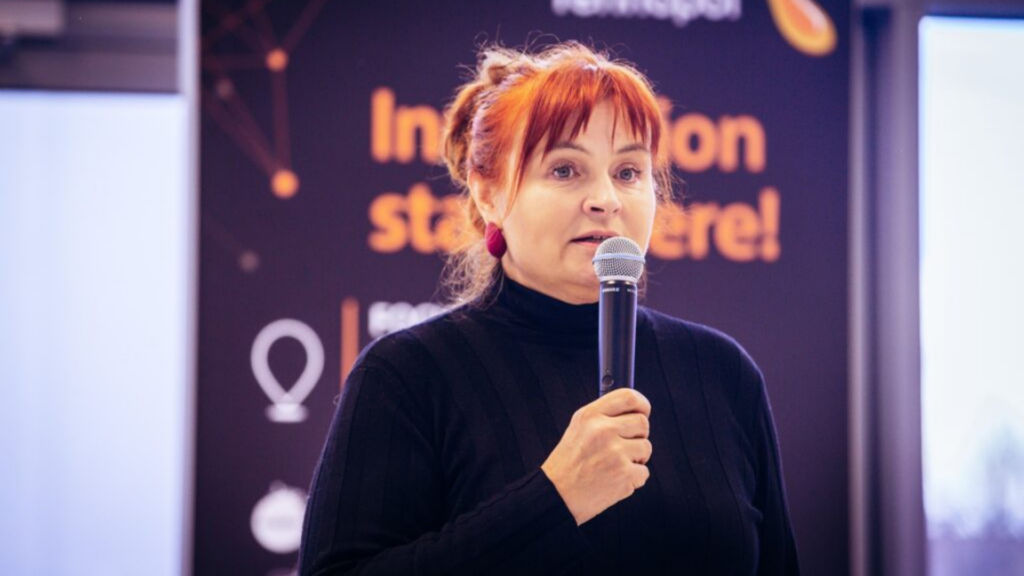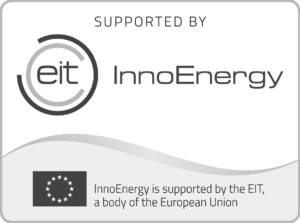17.05.2021
Piret Hirv, Manager at the Connected Health Cluster: The Estonian health technology landscape is eagerly awaiting a unicorn

A large part of Estonian health technology companies that create innovation in the complicated field of health, have concentrated at the Connected Health Cluster, managed by Tehnopol. The journey to implementing new solutions is often time-consuming in this sector; however, the benefits of these solutions improve the quality of health care services and access to health care services, and make life easier for the health care professional, the patient, and the healthy person. We had a chat with Manager of the Cluster Piret Hirv on the status of health technology in Estonia and its future outlook.
How has the past year generally been for the Connected Health Cluster?
The crisis that occurred last year initially had a startling effect on everyone. Still, the companies at the Connected Health Cluster recovered quickly and could see market potential. One good example is the company Dermtest that provides the service of teledermoscopy. With the help of development support from the cluster, they created the possibility to get an assessment of one’s skin condition via a remote appointment. With the help of the service, it is also possible to consult a specialist regarding rashes, lesions and allergies without leaving home.
What have been the most fascinating projects of the past year?
The TriumfHealth solution that focuses on the mental well-being of children is certainly worth highlighting. The past year was also difficult for children, and caring for mental health was discussed a lot. Triumf’s solution offers support for the child, using health games on smart devices. Years ago, they started supporting the treatment of children with cancer. Soon, however, they placed the health of a child in the wider sense on their desk. Some games are directed at all children and these help to avoid harmful habits and to make healthy choices (Triumf Saga), but there is also a game created to cope with chronic conditions, for example (Triumf Hero).
The story of Icosagen, a company that operates in Tartu and is engaged in the production of antibodies, is also very interesting. Recently, they completed the anti-SARS-CoV-2 nasal spray BioBlock, which contains bovine antibodies and is intended as an additional measure for preventing the spread of the virus.
Guardtime’s cooperation with WHO in developing the international vaccination passport has received international coverage. But Guardtime also does fascinating things in Estonia – in cooperation with Cognus, they are developing a digital consent service, which has so far taken place on paper at hospitals.
I would also like to highlight the cooperation of Migrevenetion with Quretec and the Estonian Headache Society. It is the ambition of the young company to create the world’s first fully digital headache clinic that would enable treatment of a migraine without leaving home.
Looking into the future, genetic data are an important resource for improving health behaviour and treatment results. Where do you think we are on the path of putting genetic data to use?
Work is in progress in the direction of putting genetic data to use. Right now, it is difficult to obtain data from the Estonian Genome Centre. This must be done in a secure and controlled manner, and it must be made certain that data end up in the right place for the right purpose. Here, we have technical issues to resolve, as well as having the whole health care system prepared to go along with the changes.
Health care services in Estonia are mainly funded by the Estonian Health Insurance Fund. How do you think this affects the endeavours of creating innovation at the Connected Health Cluster?
It is certainly important for innovative solutions to find funding for the service to enter the Estonian market and make it to the list of services compensated by the Estonian Health Insurance Fund. In the future, digital solutions should support the treatment process.
In addition to the importance of the Health Insurance Fund, we must also talk about the need to assess the security of digital applications, starting with what happens to any entered data, to verifying that these applications do not harm human health and instead, provide very specific advice and monitor the necessary things. Right now, TalTech has taken steps and created the first version of the validation environment.
What do you consider the main problems to be in the development of health technology companies in Estonia?
The situation could be better – we have several critical issues that require attention. Funding is important for early-phase ideas which originate from universities, for example, but also from elsewhere. In the field of health, the private investor’s interest in the solutions only increases in later stages of development, which is why it is necessary to find other resources for still upcoming companies. Here, the funds and expert advice of Tehnopol and the Connected Health Cluster are of great help, but this is not enough. It is also certainly necessary to improve cooperation with universities.
I, personally, miss digital services that are important for the individual, which would add value to the national digital services. Digilugu, for example, could be a place where I could easily extend my prescription. Right now, our data are available there, but developers of new services cannot access the data in the health information system. The Information System Authority is developing a consent service solution which one could use to consent to the use of their data by a company, for example. Giving informed consent should be very simple for a person, but privacy and security must definitely be guaranteed. I hope that the consent service will be the next impetus for development for our digital companies.
What do you feel the image of our country is in the field of health to other countries?
The digital state works, and this can be seen outside as well, leaving the wrinkles to be ironed out domestically. Estonia is seen as a great environment to come and develop one’s company. Our different databases (such as genetic data, the health information system) are seen as a very important resource for developing algorithms and solutions. However, our small size may become a limit.
What can we expect from this season?
I await a qualitative leap so that we can use people’s genetic data in order for personal medicine to become operational, and this would benefit both public health as well as the health of each individual. I also await the completion of the consent service. The objective of all of these tools could be bringing the person to the centre of health care services. A person must be able to make an informed and secure decision regarding which services it is possible to provide based on their data. At that, they must understand what it means to share their data with third parties – both the opportunities and the dangers.
In the long term, however, I await potential unicorns to appear in the health landscape as well. There are ideas, but the system must become even more supportive in the broader sense. It would be good to set an aim that in three years, for example, we have a list of five potential unicorns and we can create all the conditions for their success.












